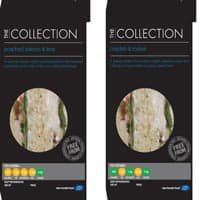
The UK government set up the Food Standards Agency (FSA) in 2000 by Act of Parliament. It is a non-ministerial government department. This means that it reports to the government but it is run by a Board which acts on the public’s behalf. This ensures it can act independently to protect consumers. The public can have confidence that the decisions it takes about food safety are in their best interest.
The FSA’s role is to:
- provide advice and information to the public and to the government on food safety, nutrition and diet
- protect the public through effective enforcement and monitoring
- support consumer choice through accurate and meaningful labelling of food.
The FSA’s vision is ‘Safe food and healthy eating for all’. The FSA seeks to achieve this vision by:
- putting the consumer first
- operating in an open and independent way
- carrying out actions that are based on science and the best available evidence.
The work of the FSA is important to everyone in society because we all have an interest in food safety and healthy living. Food from restaurants, supermarkets, and school kitchens all needs to meet certain standards.

The FSA works with a range of stakeholders. Stakeholders are groups and individuals that have an interest in what the FSA does and the decisions it makes.
Different stakeholder groups have different concerns and issues. For example,
- businesses need to be sure that they are meeting food requirements for consumers. The FSA looks at all activities ‘from farm to fork’ to help them meet requirements at every step of the food process.
- local government and law enforcement agencies need to be aware of what to do when problems occur, for example, shops selling out-of-date food. The FSA provides standards to enable food inspectors or health and safety officials to take remedial action.
- consumers want helpful information about food. The FSA carries out a range of work to make sure food is safe to eat and provides consumers with up-to-date information. This helps them to make healthy choices about what they eat.
This case study focuses on how the FSA uses scientific and market research to provide consumers with reliable up-to-date information, enabling them to make healthy choices about food. It shows how market research helped to develop the ‘traffic lights’ system of labelling food (also known as signposting). This gives consumers an easy way to understand the breakdown of fats, salts, sugars and carbohydrates in food.
Market research

Market research is about finding out what customers and consumers think, want or need. For example, market research helps businesses decide on what new products or services they will offer.
Before carrying out market research, it is important to define the aims and objectives of the research, that is, what does the consumer or organisation want to find out and why. These questions guide the market research process and lead to solutions. By analysing the results of market research, a business can improve its products or service in line with what consumers want.
One of the FSA’s main aims is to identify what customers want, need or expect to see on food labelling. FSA’s objective is to help consumers make informed choices about which foods they buy, for instance, if they had a nut allergy or were on a low calorie diet.
One of the starting recommendations was that front-of-pack labelling should have a user-friendly approach. Customers wanted labelling to provide information about the nutritional content of foods ‘at a glance’.
Aims and objectives
To meet the aims and objectives the FSA devised a market research campaign with a series of questions. These included:
- What sort of information would you like to see on packaging?
- How could the information be set out for ease of communication?
During 2004/5, FSA carried out an extensive programme of research over four separate studies with consumers, health charities and other stakeholders. These studies considered:
- the advantages of the various front-of-pack labelling formats compared against a benchmark of ‘no signposting’
- what products the signposts would be useful for
- how consumers would use the signposting to help buying decisions
- consumers’ preferences for the format of the label.
Outcomes of research
The outcomes of this programme of research helped to develop the ‘Traffic Light’ front of pack labelling scheme. Many companies, like Sainsburys, ASDA, Waitrose, Budgens, Londis, McCain Foods, Marks & Spencer and the Co-Operative Society now use the Traffic Light label on their products.
Each year the FSA also carries out face-to-face interviews with consumers to produce its Consumer Attitudes to Food survey. This research method means that people get a chance to say exactly what they think. The research aims to:
- track people’s attitudes to and awareness of food issues
- improve the public’s knowledge and understanding of those areas for which the FSA is responsible
- help the FSA develop effective communications.
Over 3,500 people gave their views for the 2007 survey. The 2007 survey showed that:
- many people had an increasing awareness of the ‘5-a-day’ fruit and vegetables message
- about 30% more consumers were aware that they should eat five portions of fruit and vegetables a day compared with 2000
- increasing numbers of consumers are worried about the amount of fat, salt and sugar in food because they understood how these may damage their health
- a growing number of consumers said that they looked at nutritional information on the labels to check the fat and salt content.

However, the survey showed that there is still room for improvement. It showed that whilst 40% of people snacked on fresh fruit in between meals, almost 35% snacked on biscuits or cakes and a further 20% on crisps or savoury snacks.
Primary and secondary research
Market research can be either primary or secondary. Primary research is new research, carried out to answer specific issues or questions. It can involve questionnaires, surveys or interviews with individuals or small groups.
Secondary research makes use of information previously researched for other purposes and publicly available. This is also known as ‘desk research’. Secondary research includes published research reports in a library, surveys or the Internet. It can also include scientific reports produced by medical councils, universities or government, for example, the Royal College of Physicians, the British Heart Foundation and the Department of Health.

The FSA also uses reports produced by research organisations such as MINTEL. These give the results of large scale surveys, which companies commission to learn more about what consumers think of their products. FSA does not make decisions or rely solely on research by third parties, unless its own research supports the findings.
Collecting information
There are different ways of obtaining and analysing information:
- Questionnaires provide answers to standard questions. These can be carried out by mail, online or face-to-face and can cover a large number of people.
- Interviews are usually one-to-one and focus on a list of questions.
- Focus groups enable a number of people to discuss ideas or topics together and provide a range of views.
Organisations often undertake secondary research first to find out what already is known about the subject. It is cheaper than setting up primary research.
As an example, the FSA ran a major television, newspaper and other advertising campaign to raise public awareness of its ‘Traffic Lights’ campaign. The campaign consisted of three 10-second TV adverts, a poster on a bus side, a six-sheet poster, a press advertisement and an advertorial in the Sun.
The first campaign took place between mid-January and mid-March 2007. A further 10-second TV advertisement was launched on the 5th March. The FSA undertook some primary research interviews to find out if how effective the campaign had been in making people more aware.

Quantitative and qualitative research
Quantitive research

Quantitative research presents information numerically, for example, by use of percentages. All respondents in interviews or questionnaires answer the same questions to ensure consistency.
For example, the following question was used before and after the advertising campaign:
‘How often, if at all, do you use information on salt, fat, sugar or saturated fat on the FRONT of the pack when it is available when choosing which food product to buy?
01: Never/Not seen 02: Rarely 03: Occasionally 04: Usually 05: Always 06: Do not purchase food’

The results of this question for the period before and after the advertising campaign were shown as a chart to make it easy to understand.
Qualitative research

Qualitative research finds out opinions through open-ended questions. The FSA used primary qualitative research when designing the traffic light scheme. It talked to small groups of medical professionals, consumers and government advisers.
It also used secondary research taken from scientific studies by bodies like Diabetes UK. This helped the FSA to gather all relevant information to ensure that the scheme would fulfil requirements.
By using both quantitative and qualitative research, the FSA was able to maximise the range of data available for effective analysis. For example, it commissioned a survey of 2,000 adults using Computer Assisted Personal Interviewing (CAPI). This plays the TV adverts and shows posters and press adverts to respondents.
Each interviewer had a random quota of people. The interview group had a mix of gender, age and working status to ensure a representative sample. A sample is a small part of something intended as representative of the whole group. For example, it would be impossible to survey the whole country. By using a carefully selected sample, the FSA analyses and makes judgements about what the overall trends are. By analysing sample data, the FSA can draw conclusions about what the results would be for the larger group.
Analysis and use of market research
The market research showed that increasing numbers of consumers are aware of the work of the FSA, the importance of a healthy diet and how the traffic light system guides their purchasing. This system makes it easy for consumers to make healthier food choices quickly and easily.

Healthy eating is all about getting the overall balance right. Consumers should look for products with green, amber or red coloured labels on the front of the pack. For example, when deciding between two pizzas, the colours guide the consumer on which has lower fat or salt, helping them decide which one to buy. It also helps the retailers by showing that they are taking a responsible approach in providing nutritional information for consumers.
The front of pack traffic light colouring delivers three main benefits:
- It makes it easier for consumers to eat more healthily.
- It encourages consumers to look for and demand healthier food.
- It provide businesses with an incentive to provide healthier food. There is a pay-off to cutting back on fat, saturated fat, salt and sugar in products as consumers will increasingly prefer these.
The traffic light system has been adopted by a range of major UK retailers. Waitrose,for example, describes how the scheme works with its products: ‘The easy-to-follow front of pack format allows customers to see the nutritional content of products at a glance. A majority of Waitrose customers use the information to help them make healthier choices. Traffic Lights appear on a range of Waitrose products including ready meals, sandwiches, pizzas, vegetable accompaniments and beefburgers.’

The Agency’s traffic light approach is fully supported by key medical institutions and well respected organisations, such as British Medical Association, The National Consumer Council, WHICH? Magazine and the British Heart Foundation.
Having the support of these influential groups means that consumers recognise that the research is valid and that they can trust the information. Developing this approach was based on both consumer research and scientific-based secondary research. This is research carried out under scientific conditions such as laboratory testing.
Conclusion

The FSA carries out market research with consumers, producers and retailers to identify ways to educate the public about diet and food issues.
The FSA uses science-based evidence about healthy eating and food to protect consumers and public health. It also uses existing market research about food consumption produced by organisations such as MINTEL as well as conducting its own research.
The FSA’s traffic light colour-coded system, developed after research, gives consumers a useful tool to help with healthy food choices. Evaluation after the advertising campaign shows that the proportion of people now referring to the nutritional information on the front and back of packaging has increased from 72% to 75%.
The FSA conducts regular research to evaluate how consumers are using the traffic light system. This helps it to assess the value of this approach and to make ongoing improvements.
